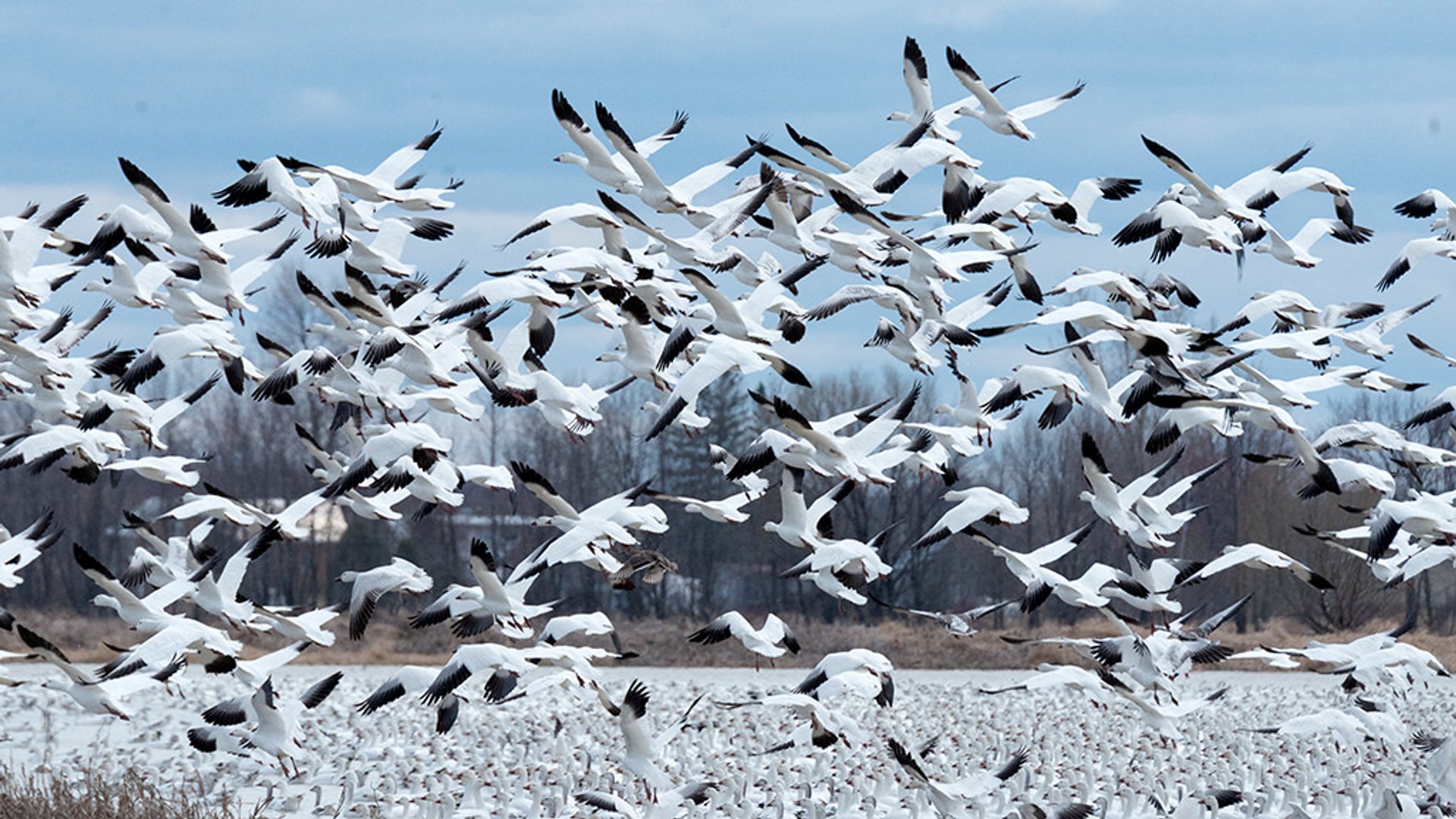
So, January is the time to see all kinds of cool waterfowl that aren’t around any other time of year.

Birds like ducks and gulls need ice-free water to find fish and other goodies, and come south in winter to find a place to splash around in.

These birds aren’t leaving the high north for lack of insects, but rather are looking for open water. But for other species, like the ones that breed in the Arctic, the Lower 48 is the perfect wintry destination, even though it’s still pretty bleak. The lack of insects and fruits during wintertime in the northern states causes many migrants to fly as far south as Central or South America. It’s winter, and it’s cold, but the birding is surprisingly great. Here’s a handy almanac (mostly focused on birds in the Northeast) to help you use the time of year to your birding advantage. And to be a really effective birder, you need to know where birds are and what they’re doing each season and each month. And you definitely don’t put on a parka and grab your sled in the middle of an intense August heat wave.Īs a person, living season to season makes total sense. You don’t run downstairs and look for presents under the houseplants in May. For example, they posted this informative blog post about some of the early spring migration patterns seen in late February 2014.You don’t go knocking on strangers’ doors for candy in January. At other times of the year, you can find interesting analyses and discussions of weather patterns and bird movements. During peak spring and fall migration times (March-May Aug-Oct), BirdCast releases weekly migration forecasts. The BirdCast team studies weather forecasts to make predictions about bird migration: when species will migrate, where they’ll be going, and how far they will be flying. You can also use eBird’s new Locations feature to see the most recent reports for a given county or state.Īnother way to keep up with migratory bird movement is by visiting BirdCast. By selecting your state and/or county, you can create a list of birds in your area that includes information about when they arrive and depart the region, as well as how often they are reported in any given week of the year. Many species of blackbirds are also on the move in February, in addition to Red-winged Blackbirds, including Common Grackles and Rusty Blackbirds (in the East) and Brewer’s Blackbirds (in the West).Ī great way to get a handle on when different species might be arriving in your area is by using the Bar Charts feature in eBird. Some of the earliest spring migrants are Red-winged Blackbirds, Killdeer, American Robin (bear in mind that plenty of American Robins actually stick around all year long), Tree Swallow, and, in the East, Eastern Phoebe.

Naturally, the timing of migration depends a lot on how far south or north you are-but February and early March usually bring the first returning birds. You can also use data from eBird to find out when to expect birds to return to your location, and our BirdCast project for weekly forecasts during migration season predicting which species will be on the move. But several common species, such as Red-winged Blackbirds, Tree Swallows, and Killdeer, are among the first returning migrants across much of North America.

The answer depends a lot on where you live, of course.


 0 kommentar(er)
0 kommentar(er)
